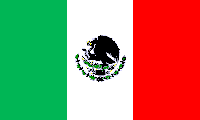Background of the Zapatistas

|
|
|
|
|
|
|
|
|
|
Background of the Zapatistas

Background
Chiapas is Mexico’s southernmost state and borders Guatemala on the
south. It is home to the Lancandon Jungle, the Highlands, and the
fertile lowlands. The state is rich in natural resources, which have
been vital in supporting the rest of the country. For example, Chiapas
provides Mexico with much of its oil, natural gas, electricity, beef, and
corn. In addition, the Lancandon Jungle, home to many Indigenous
peoples, supplies thousands of trees to the logging industry. The
wealth of this area has made the state and its Indigenous people, vulnerable
to exploitation of the money hungry ladinos.
 This region is
not only rich in terms of its natural resources it can also boast its amazing
diversity of the people who live there. The area is home to the highest
concentration of Indigenous people in Mexico. The Maya Indians have
lived in this area for centuries and have managed to survive continual
attempts at ethnocide. They are a very diverse people; they speak
several different languages and practice various religions but have recently
unified to fight for a common cause. The exploitation that has occurred
has forced these people into a poverty that has been merely impossible
to escape. They refuse to let this occur any longer. Now they
are saying, “Enough is enough!”
This region is
not only rich in terms of its natural resources it can also boast its amazing
diversity of the people who live there. The area is home to the highest
concentration of Indigenous people in Mexico. The Maya Indians have
lived in this area for centuries and have managed to survive continual
attempts at ethnocide. They are a very diverse people; they speak
several different languages and practice various religions but have recently
unified to fight for a common cause. The exploitation that has occurred
has forced these people into a poverty that has been merely impossible
to escape. They refuse to let this occur any longer. Now they
are saying, “Enough is enough!”
History of the Struggle
Maya resistance began with the Spanish conquistadors as they invaded Indigenous lands and forced them into the jungle and the less productive highlands. Unfortunately for the millions of Indigenous people who lived there the Spanish were too powerful to successfully resist the displacement. Because the best lands were taken and their new lands were unproductive, Indigenous peoples were forced into debt slavery on the large Ladino owned estates. Even Indian nobility were forced to become peasants. Small local uprisings against the ladinos told of the Indian discontent but nothing positive resulted.
Throughout their history in Chiapas, Indigenous peasants tried to change their dire situation. Indian communities pleaded to their government for protection and help but corruption ran deep through the system. One party, the PRI, dominated both federal and state governments for over 6 decades. This left the country defenseless to the fraudulent central power. Often, they heard promises of land reform but no policy was ever truly implemented. What is worse is that it seemed that the powerful Ladinos were above the law in that region; they ignored the national laws that made steps toward equality and no one ever bothered to enforce them. The local governments were at the mercy of the wealth few and time and again elections were fixed.
During the Mexican Revolution in 1910, one man emerged as a hero to Indigenous peoples. Emiliano Zapata fought under the motto, ”Tierra y Libertad”, Land and Liberty. He urged that ejidos be reestablished for Indigenous communities. When Lazaro Cardenas became president, Zapata’s dream was realized as he began Agrarian Reform. Under the program, land was given back to Indigenous peoples and hope was restored.
Though many people were satisfied with land, the situation did not or has not improved significantly for the Maya. They are still denied basic human rights. The poor of Chiapas do not receive adequate health care, education, or public services and beyond that they are gravely discriminated against. The infant mortality rate is twice that the rest of Mexico and maternal mortality is the highest in all of the country (Ross 290).
In 1992 the Maya once again lost all hope. President Salinas officially ended Agrarian Reform, which took away communally owned land. Again, Indigenous peoples were left without land. To a people whose existence revolves around the land and what it provides, the end of Agrarian Reform spelled the destruction of their people. Then, in 1993 Mexico entered into the North American Free Trade Agreement, along with Canada and the United States. The signing of NAFTA signaled Mexico’s desire to ignore the suffering poor. No indigenous farmer could ever compete against the large corporations with only his small plot of land and outdated equipment.
Left only with despair, many Maya made a choice to dedicate their lives to a struggle. That struggle led to the formation of the Zapatista Army of National Liberation. Both men and women left their families to enter the Lancandon Jungle to train and organize. They offered all their resources to build up the Zapatista Army. They knew that the sacrifice was great but many felt that they were left without options.
